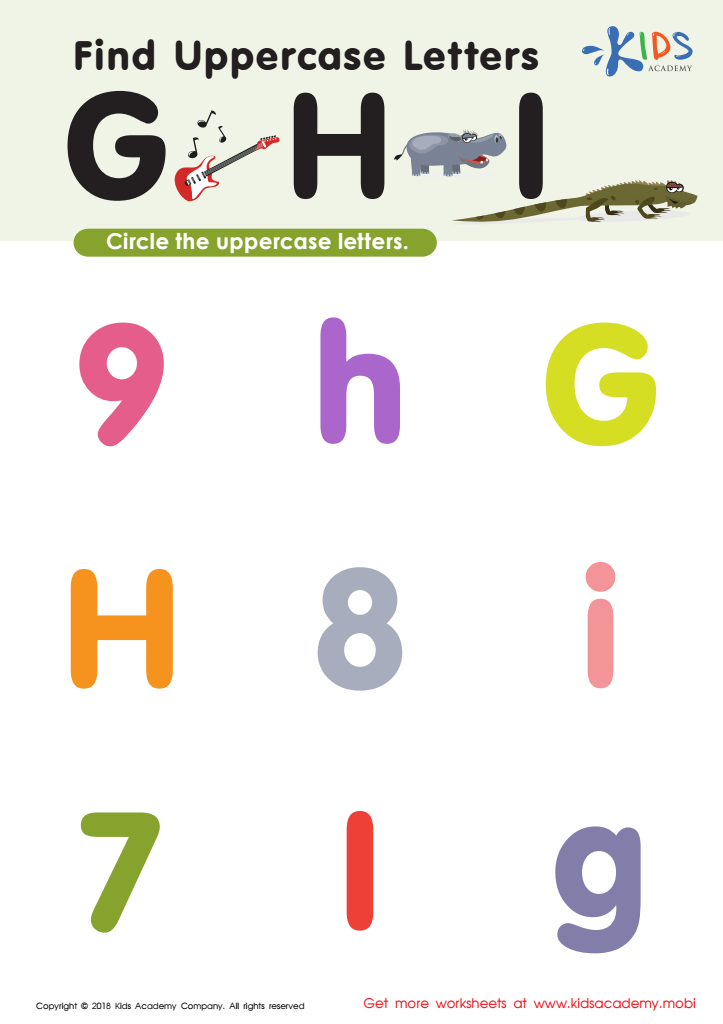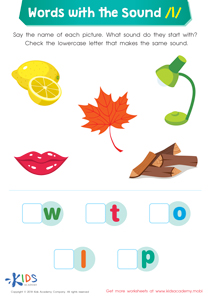Alphabet familiarity Uppercase Letters Worksheets for 4-Year-Olds
4 filtered results
-
From - To
Discover our engaging "Alphabet Familiarity Uppercase Letters Worksheets" designed specifically for 4-year-olds! These worksheets provide a fun and interactive way for young learners to enhance their understanding of uppercase letters. Each activity focuses on letter recognition, helping children to identify and differentiate each character while developing their fine motor skills through tracing and coloring. With vibrant illustrations and simple instructions, these worksheets create a fun learning experience that encourages kids to explore the world of letters. Perfect for home or classroom use, our worksheets support early literacy skills and lay a strong foundation for reading readiness. Start your child’s alphabet adventure today!


Find Uppercase Letters G, H, and I Worksheet


Find Uppercase Letters Worksheet


Find Uppercase Letters J, K, and L Worksheet


Find Uppercase Letters A, B, and C Worksheet
Fostering familiarity with uppercase letters in 4-year-olds is crucial for several reasons. First, uppercase letters are foundational for early literacy skills. Recognizing these letters helps children begin to read and write, giving them the tools to communicate effectively. At this age, mastery of uppercase letters supports cognitive development, as it engages children in identifying shapes and sounds, enhancing their phonemic awareness.
Second, many social and educational experiences revolve around uppercase letters—from the title of a book to signage in their environment. Helping children recognize these letters promotes their confidence and independence as they interact with the world around them. Furthermore, uppercase letters are often the starting point for writing: when children write their names and simple words, they initially rely on uppercase formation.
Lastly, understanding uppercase letters provides a sense of accomplishment and builds a positive relationship with learning. When children successfully recognize and use these letters, their self-esteem improves, making them more eager to engage in further educational activities.
In summary, parents and teachers play a vital role in fostering uppercase letter familiarity, laying the foundation for literacy and boosting children's confidence and curiosity in their learning journey.

 Assign to My Students
Assign to My Students




















